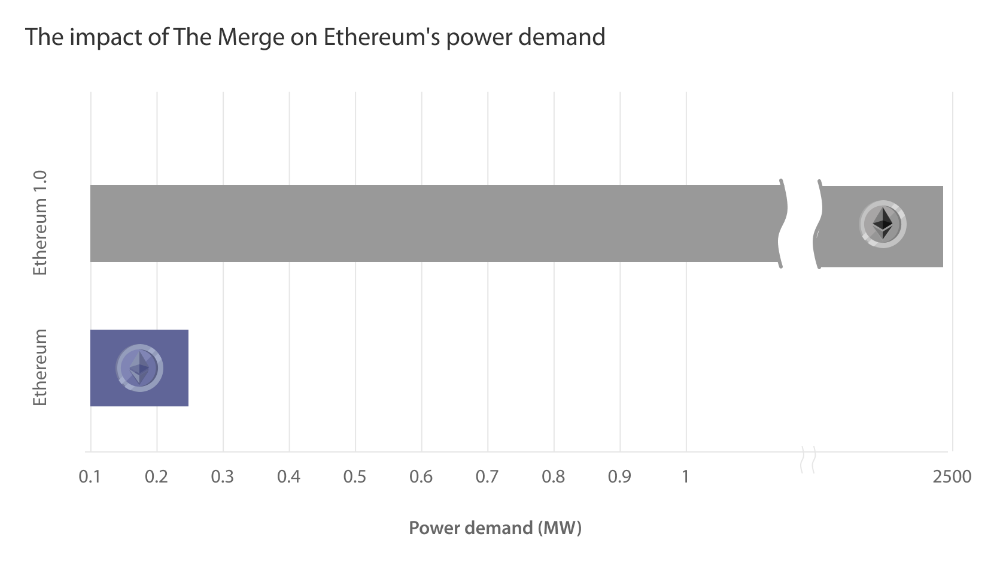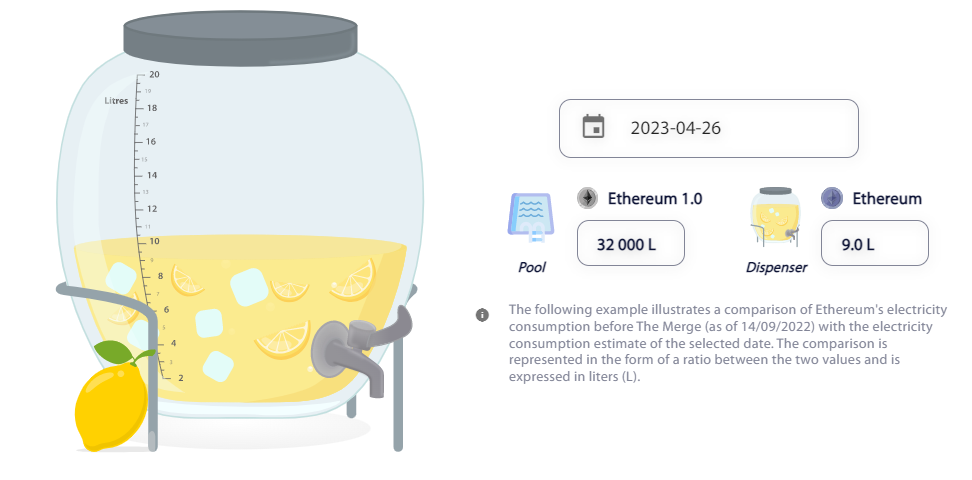Latest research by the University of Cambridge found that after Ethereum’s historic Merge upgrade in September 2022, the blockchain network’s energy consumption is estimated to have decreased by a staggering 99.99%.
Cambridge University’s ‘Blockchain Network Sustainability Index’, dedicated to tracking the environmental impact of cryptocurrency blockchains, found that pre-merge Ethereum consumed 2,500 megawatts (MW) of power. Now, Ethereum consumes around 0.25 MW.

Why? Because Ethereum’s Merge upgrade, which saw the blockchain network shift from a Proof-of-Work (PoW) to Proof-of-Stake (PoS) consensus mechanism, requires much less computational power.
Ethereum: What is Proof-of-Stake (PoS)?
To understand what PoS is, we first need to understand PoW. Used by Bitcoin’s blockchain network, PoW refers to a consensus mechanism that requires users – or in this case, “miners” – to solve complex mathematical problems in order to verify transactions on the Bitcoin blockchain.
As PoW mandates “miners” to compete and solve difficult mathematical questions, PoW needs significant computational resources and thus uses up massive amounts of energy.
Here’s where PoS comes in. In 2016 Vitalik Buterin, ‘Prince of Crypto’ slash co-founder of Ethereum, proposed a design philosophy for PoS. In 2017, Buterin shared another post further detailing PoS.
The PoS infrastructure that Vitalik Buterin envisioned for Ethereum was eventually called the ‘Merge’. Fast forward to September 2022, the upgrade to PoS finally happened, and Ethereum is no longer the energy guzzler it once was.
So how much less energy?
To help readers grasp how much energy Ethereum currently consumes, here are a few comparisons provided by Cambridge University.
Ethereum’s electricity usage prior to the Merge “can be likened to a swimming pool” at 32,000 litres. After the Merge, Ethereum now uses “roughly the volume of a lemonade dispenser” at 9 litres.

Next, comparing Ethereum to Bitcoin, if Bitcoin’s energy usage were equal to the height of Merdeka 118, the world’s second-tallest building, Ethereum’s energy usage prior to the Merge would be “comparable to the London Eye.” Post-Merge, Ethereum’s energy usage “would be as miniscule as a raspberry.”

Compared to electricity use by other major corporations, Ethereum consumes significantly less electricity at 5.83 gigawatt hours (GWh). Deutsche Bank clocks around 423 GWh, American Express around 202 GWh, and Netflix is at around 123GWh.
Researchers compiled the data with various methods, including a bottom-up economic model and a sensitivity analysis. The researchers also monitored the number of nodes that execute the PoS mechanism.
Cambridge University’s ‘Blockchain Network Sustainability Index’ is updated every 24 hours. So, the metrics provided are not final, but what is certain is Ethereum is now in its ~environmentally conscious era~ and uses considerably less energy.





